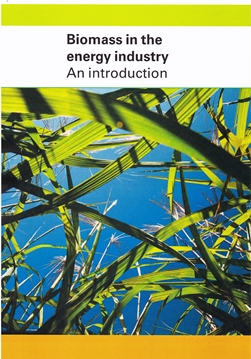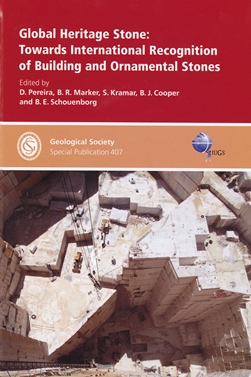 Biomass in the Energy Industry
Biomass in the Energy Industry
Biomass is an increasingly important component of the energy landscape and biomass coupled with bioenergy is seen by many as an essential step in the transition to a sustainable energy economy. This book is a broad introduction to benefits and potential limitations of biomass and explains in broad terms what crops and potential crops are suitable for use in various scenarios. The authors explain where biomass fits into the world energy model and how a greater uptake of biomass can help mitigate the increasing volumes of CO2 in the atmosphere. This book has its origins in the BP Energy Sustainability Challenge and is one of several introductory books on topical subjects examining energy industry practices generated by the sustainability challenge.
The text is well laid out and leads the reader through concepts associated with biomass and its potential with clear diagrams, maps and charts before moving onto the economics, politics and environmental concerns that influence where biomass can be grown. The tone is direct; it reads like a student textbook rather than an academic tome, and is easily accessible to various audiences. As with the other books in the BP energy and sustainability series it has extensive references, with the key references highlighted after each chapter so the reader can follow up on specific lines of enquiry.
The book itself is well made and printed on quality FSC-certified Cocoon Silk, but more relevant is the fact that this book can be downloaded free as a PDF from BPs own website along with its companion texts for supply chain and water use.
This volume is aimed at a very broad audience. Being an introductory text, I can see it being of great use to policy makers and teachers as well as engineers and scientists wishing for a greater understanding of biomass and its contribution to mitigating climate change. While a good introduction to a very relevant subject, the data pertaining to regional growth of biomass and volumes shipped, as well as politics and economics will become dated very quickly, such is the speed of development in this area.
Overall I was impressed with the breadth and depth of coverage of biomass in such a short introductory volume, this is an excellent overview of a very relevant topic and being available as a free download it is definitely worth a look.
Reviewed by John Midgley
BIOMASS IN THE ENERGY INDUSTRY: AN INTRODUCTION by Davis, S C, Hay, W & Pierce, J, 2014. Published by BP and ON Communications, 117pp (pbk) ISBN: none List price: FREE - available to download at W: www.bp.com/energysustainabilitychallenge
 Water in the Energy Industry
Water in the Energy Industry
This book (the basis of John Simmons’ recent feature article in Geoscientist 25.10) is the summary of the water component of the BP Energy Sustainability Challenge and is framed as an introduction to water used in a comprehensive range of energy industry applications and is not limited to activities in which BP themselves engage. It is one of several introductory books on topical subjects examining industry practice generated by the Sustainability Challenge and the processes and results can be applied to a range of operators and allied industries.
Several important messages are held out by this book. The main one is that at least one major player in the energy industry recognises water issues, specifically source, volumes used, waste disposal and sanctity of resources are all very important to their continuing in business. The authors recognise it is a shared resource and that it must be used sustainably with reference to the commodity itself and also with reference to society.
The book is well laid out, with clear chapter and subject headings, and makes good use of diagrams, schematics and charts to illustrate the discussion. There are clear side-boxes to explain the chemical processes and points of information, and the explanation of units and conversation factors are at the front of the book to orient the reader, not hidden away at the back to be searched for.
The use of water within various industrial scenarios, including shale gas, nuclear, carbon capture and storage (CCS) and enhanced oil recovery (EOR) are examined, with clear referencing for data sources and well annotated schematics showing the processes that use water. Each chapter has a section that discusses risks, opportunities and innovations, as well as a chapter summary and an extensive list of references.
The book itself is well made and printed on quality FSC-certified Cocoon Silk, but more relevant is the fact that, as with the previous volume reviewed (above) the book can be downloaded free.
This book is intended for a very broad audience of engineers, environmentalists, sustainability managers and students as well as an interested general public. Although described as an introduction, it will possibly be the only text on the subject that many readers will require. If the reader does need more detail, or to know where to find more information, the well laid-out lists of references will help.
Reviewed by John Midgley
WATER IN THE ENERGY INDUSTRY: AN INTRODUCTION by Williams E D and Simmons J E, BP, 2013. Published by BP and ON Communications, 107pp (pbk) ISBN: none. List price: FREE - available to download at W: www.bp.com/energysustainabilitychallenge

Elements of Petroleum Geology
Elements of Petroleum Geology is an overview of nearly all aspects of petroleum geology and how they are connected. The last edition (2nd) was published back in 1998 and has been overdue a revision to reflect more recent technology and industry practice. In the latest edition, the style of writing, order in which aspects of petroleum geology are addressed and clear layout of equations have been retained. This makes the book a very good aide mémoire for professionals as well as a comprehensive textbook for students. Throughout the book the voice is authoritative and the text concise. Complex concepts are explained in a clear manner, especially those related to sedimentary environments reflecting the authors’ areas of expertise.
In the 3rd edition, the chapters and layout have not changed from previous editions. The text appears to be largely the same, with additional sections on horizontal drilling and hydraulic fracturing. I did not find any additional material for carbon storage or enhanced oil recovery, two topics that appear to be falling within the remit of petroleum geologists. There is new material on adsorption and absorption in source rocks that use clear colour diagrams, highlighting the contrast with the majority of illustrations carried over from earlier editions which remain predominantly black and white.
The version of the book I received for review was the electronic edition. While not having the familiarity of a print edition for a quick flick through, it does have the advantage that the many of references can be accessed via the internet by a quick click on the hotlink. The downside is ‘link rot’ - many are now defunct! Given that the references are hyperlinked, I expected the index to have the same ability and link to inline text; alas it does not - another opportunity missed to exploit the potential advantages of eBooks.
Elements of Petroleum Geology has been the book I recommend most often to mudloggers and wellsite geologists who want to fill their knowledge gaps or gain a wider perspective on practical petroleum geology. I will continue to recommend it to all prospective students who wish to pursue a geoscience or engineering career in the oil industry, especially if they expect to be closer to the rig-end of the business. This is an expensive book, especially for students. If one is considering a purchase, think carefully about which format, print or electronic, best fits your needs.
Reviewed by John Midgley
Elements of Petroleum Geology, 3rd Ed. by Selley, R C and Sonnenberg, S A, 2015. Published by Elsevier, 527pp (electronic book version as PDF) ISBN: 978-0-12-386031-6 (print) / 978-0-12-386032-3 (eBooks) List price: £69.99 W: http://store.elsevier.com/Elements-of-Petroleum-Geology/Richard-Selley/isbn-9780123860316/

Global Heritage Stone
The designation of Global Heritage Stone Resource (GHSR) is intended to assist in the recognition of the materials from which so much of the ‘built heritage’ is constructed and to ensure their supplies for future projects (including restorations). The utility of the designation will depend, of course, on its relationship to local laws and regulations and, while such matters are discussed at length in some of the papers in this work, this reviewer was not convinced that a clear and unambiguous case (other than one of general worthiness) has been made.
According to the introductory remarks of the editors, most of the papers included reflect presentations made at the EUGS General Assembly in 2013, supported by contributions from other authors ‘enthusiastic about the concept’ of GHSRs (and the related designation Global Heritage Stone Province, GHSP, a geographical area containing two or more GHSRs). The responsibility for awarding these accolades falls to the Heritage Stone Task Group (HSTG), a joint project between IUGS and IAEG.
The guidelines and checklists designed by the HSTG are well-documented and contextualised in this work, but several of the papers repeat these, an issue which I found somewhat irksome and one of the few negative points of the book. The papers vary greatly in length and technical detail and cover proposals for specific GHSRs, reviews of history and utilisation of specific rock types (shamefully I had to Google ‘Scottish rubble’….), the description of potential GHSPs (e.g. southern Slovenia and the Minas Gerais region of Brazil) and details of the variety of rock types used in particular settings (St Petersburg, the Via Roma of Turin).
The editors have done well in compiling such a broad range of papers and this prevents the book from becoming a collection of sterile technical papers of specialist interest only. It is a compilation full of interest to the ‘general’ reader and I genuinely enjoyed reading it. There are detailed histories and descriptions of some old friends (larvikite, Carrara Marble) and many fascinating technical and historical details of stones and provinces that are probably poorly known to many readers of Geoscientist.
This could be an important volume to have to hand for those involved in geoheritage projects and many of its papers would be of interest to the more general reader who simply ‘loves’ rocks (and who doesn’t?).
Reviewed by Trevor F Emmett
GLOBAL HERITAGE STONE: TOWARDS INTERNATIONAL RECOGNITION OF BUILDING AND ORNAMENTAL STONES by D Pereira, B R Marker, S Kramar, B J Cooper and B.E. Schouenborg (editors). Geological Society Special Publication No. 407. Published by The Geological Society London 275 pp (hbk) ISBN: 9781862396852 List Price: £90.00. W: Bookshop.